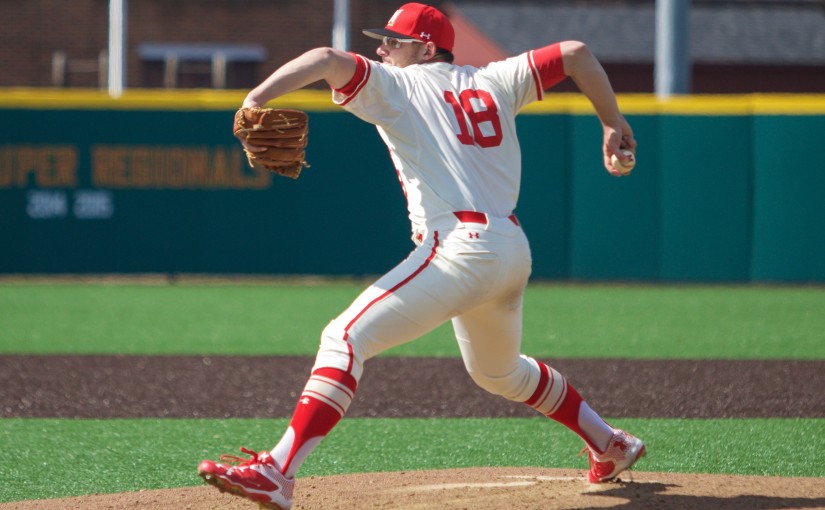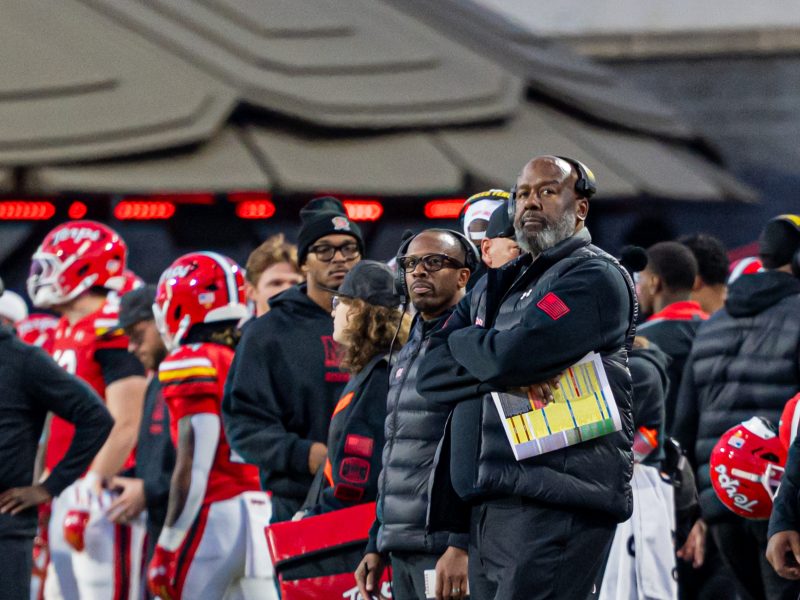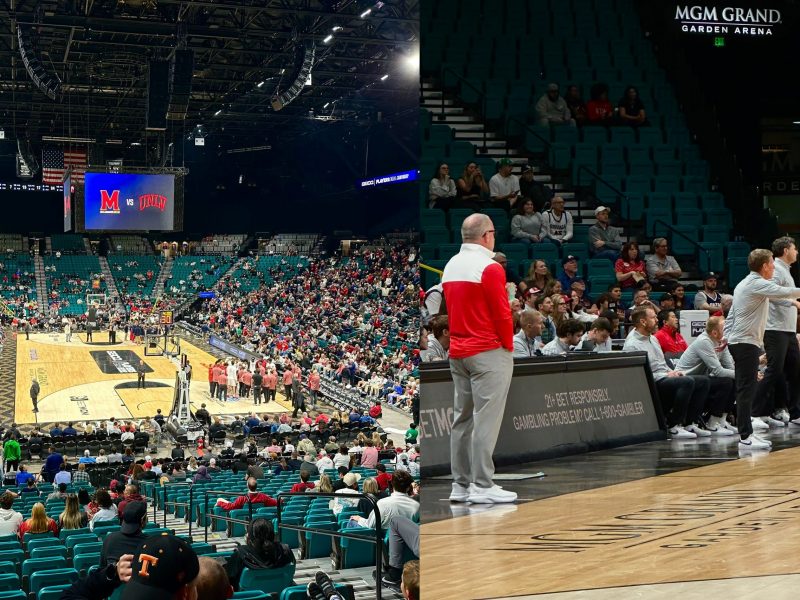With the Super Bowl complete, it’s now officially baseball season. For MLB teams, pitchers and catchers report this week, and spring training begins soon thereafter. Meanwhile, Maryland baseball will kick off its season on Friday at Tennessee.
There aren’t too many former Terps in the majors — relief pitchers Brett Cecil and Adam Kolarek were the only ones who played a big-league game in 2017. Between 1982 and 2011, Maryland finished above .500 a grand total of four times, so it’s not surprising that most alumni from those teams aren’t current pros.
[Read more: Rob Vaughn will continue Maryland baseball’s blue-collar mentality as head coach]
But the Terps have turned things around recently, under former coaches Erik Bakich and John Szefc. They’ve had a winning record in six straight seasons, and after going more than 40 years without an NCAA tournament berth, they’ve made the postseason in three of the past four campaigns. Plenty of players from those Maryland teams are in the minors, and they should make it to the show at some point soon.
Across the blogosphere, countless analysts rank minor-league prospects for all 30 teams. Each of the following six players is a top prospect in his club’s system according to one of the three major outlets (MLB.com, Baseball Prospectus and Baseball America). They’ll start 2018 on the farm, but if they keep playing as well as they have, you’ll see them in the big leagues eventually.
Mike Shawaryn — RHP, Boston Red Sox
MLB.com rank: 6 | BP rank: 6 | BA rank: 8
“Shawaryn’s swing-and-miss slider and fastball offer a floor of a reliever. If he can improve his changeup, he could be an innings-eating No. 4 starter.” —BA
If Shawaryn had gone pro after his spectacular 2015 season — in which he ranked 17th nationally with a 1.71 ERA as a sophomore — he may have been one of the top picks in the MLB draft. But he returned to College Park for another year, and after his ERA ballooned to 3.18, he slipped to the fifth round of the 2016 draft, where the Red Sox snatched him up. Still, he holds numerous Maryland records, including career innings (307.1) and strikeouts (307).
Boston has gotten its money’s worth from Shawaryn, who’s posted a 3.71 ERA over two seasons in the minors. He’s been the ever-valuable power pitcher with good control — in 150.1 total innings, he’s struck out 191 batters and walked 55. The Red Sox rotation struggled to stay healthy in 2017, and if that recurs in 2018, the 23-year-old right-hander could see some time in the majors.
Brandon Lowe — 2B, Tampa Bay Rays
MLB.com rank: 14 | BP rank: Next 10* | BA rank: N/A
“Lowe is a bat-first above-average second baseman with a second-division regular floor.” —BP
As a Terp, Lowe did nothing but hit. Over 432 at-bats in 2014 and 2015, he tallied a .338 batting average, .448 on-base percentage and .509 slugging percentage. Even though he was inconsistent in the field, the Rays chose him in the third round of the 2015 draft. His 87th overall selection was the fourth-highest for any Maryland player this millennium.
Lowe’s profile in the minors hasn’t changed much from his time in College Park. His glove is still something of a liability (he’s committed 32 errors at second base over the past two seasons), but his bat is a major asset (he slashed .298/.375/.493 in 469 plate appearances last year). That could earn him a spot on a Tampa Bay offense that faded badly down the stretch in 2017 and will probably lose its best hitter to free agency.

Outfielder LaMonte Wade runs to third during the Terps’ 3-1 loss to VCU at Bob “Turtle” Smith Stadium on April 22, 2015. (File photo/The Diamondback)
LaMonte Wade — OF, Minnesota Twins
MLB.com rank: 17 | BP rank: 8 | BA rank: N/A
“[Wade is] a major-league hitter that can contribute off the bench or as an injury replacement.” —BP
During his first two years in College Park, Wade had a pedestrian .253 batting average. But that masked his true strength: plate discipline. A sharp eye helped Wade pile up walks and put up a .372 on-base percentage during that span. In 2015, he turned a corner — he hit .335, which spiked his OPB to .453 — and unlike Shawaryn, he decided to leave when his stock was the highest. The Twins picked him in the ninth round of the draft that year.
While Wade hasn’t shown much power in the minors — he’s hit 24 long balls in 986 at-bats — his plate discipline has remained exemplary: He’s earned a free pass in 14.6 percent of his plate appearances, and gone down on strikes in 12.5 percent. A guy who reaches base at a .408 clip is bound to get a cup of coffee at some point, even for a Minnesota offense that scored plenty of runs in 2017.
Kevin Smith — SS, Toronto Blue Jays
MLB.com rank: 25 | BP rank: N/A | BA rank: N/A
“If the bat can improve, he has the chance to be an everyday shortstop at the next level, something the Blue Jays are banking on.” —MLB.com
At Maryland, Smith was known best for his defense. He committed a total of 39 errors in three years as a starter, which isn’t much when you get as many chances as a shortstop does. After two seasons of so-so offense in 2015 and 2016, he revamped his approach at the plate and hit the snot out of the ball in 2017, leading the team with a .552 slugging percentage in 194 at-bats.
The rest of his batting line — a .268 batting average and .323 on-base percentage — wasn’t so great, which is why he dropped to the Jays in the fourth round of the draft last year. But he held his own as a 20-year-old in rookie ball, with a .271/.312/.466 slash line in 283 trips to the dish. And his defense is as dependable as ever, which may give him a role in Toronto down the road.

Right-hander Brian Shaffer throws the ball during Maryland baseball’s 2-1 win over Penn State on April 14, 2017 at Bob “Turtle” Smith Stadium. (Matt Regan/The Diamondback)
Brian Shaffer — RHP, Arizona Diamondbacks
MLB.com rank: 28 | BP rank: N/A | BA rank: N/A
“Shaffer was a starter for the better part of three years at Maryland, and with his size and pitchability, he should be able to continue in that role.” —MLB.com
As a rookie Terp in 2015, Shaffer notched a mediocre 4.57 ERA in 16 appearances (11 starts). Beneath that, though, he had superb peripherals — over 61 innings, he fanned 52 hitters and gave free passes to just nine. Shaffer pitched up to his potential in 2016 and 2017: He spun a 2.63 ERA in 31 starts, with 184 strikeouts and 31 walks in 212 frames.
Like Shawaryn, Shaffer wasn’t a top pick in the draft; the Diamondbacks snagged him in the sixth round. And like Shawaryn, Shaffer has excelled in the minors — he had a 3.43 ERA and a 21:1 K:BB ratio in 21 innings of Low-A ball last year. Arizona’s rotation is pretty stacked right now, and Shaffer still needs some more seasoning, but if he keeps this up, he’ll get the call in a year or two.
Andrew Bechtold — 3B, Minnesota Twins
MLB.com rank: 29 | BP rank: N/A | BA rank: N/A
“Defensively, Bechtold has the chance to stick at third long-term. … That, with his offensive upside, points to the ceiling of a big league regular at the hot corner.” —MLB.com
In 2016 — his one full season as a Terp — Bechtold struggled at the plate, hitting .218 with a .581 OPS over 165 at-bats. But he transferred to the NJCAA’s Chipola College for 2017, and the move served him well: He nearly doubled his batting average to .419, with a .532 on-base percentage and .676 slugging percentage to boot. The strength of that one campaign convinced the Twins to pick him in the fifth round of the draft last year.
Bechtold’s limited experience on the farm has been promising: Over 175 plate appearances in rookie ball, he hit .299 with a .406 on-base percentage. And he’s still just 21, so he has time to grow. His power is limited, but if he can continue to draw walks — something he even managed to do with Maryland — he’ll help his teams score runs, which could eventually punch his ticket to the show for Minnesota.
*BP puts the Nos. 11-20 prospects in one big group.



